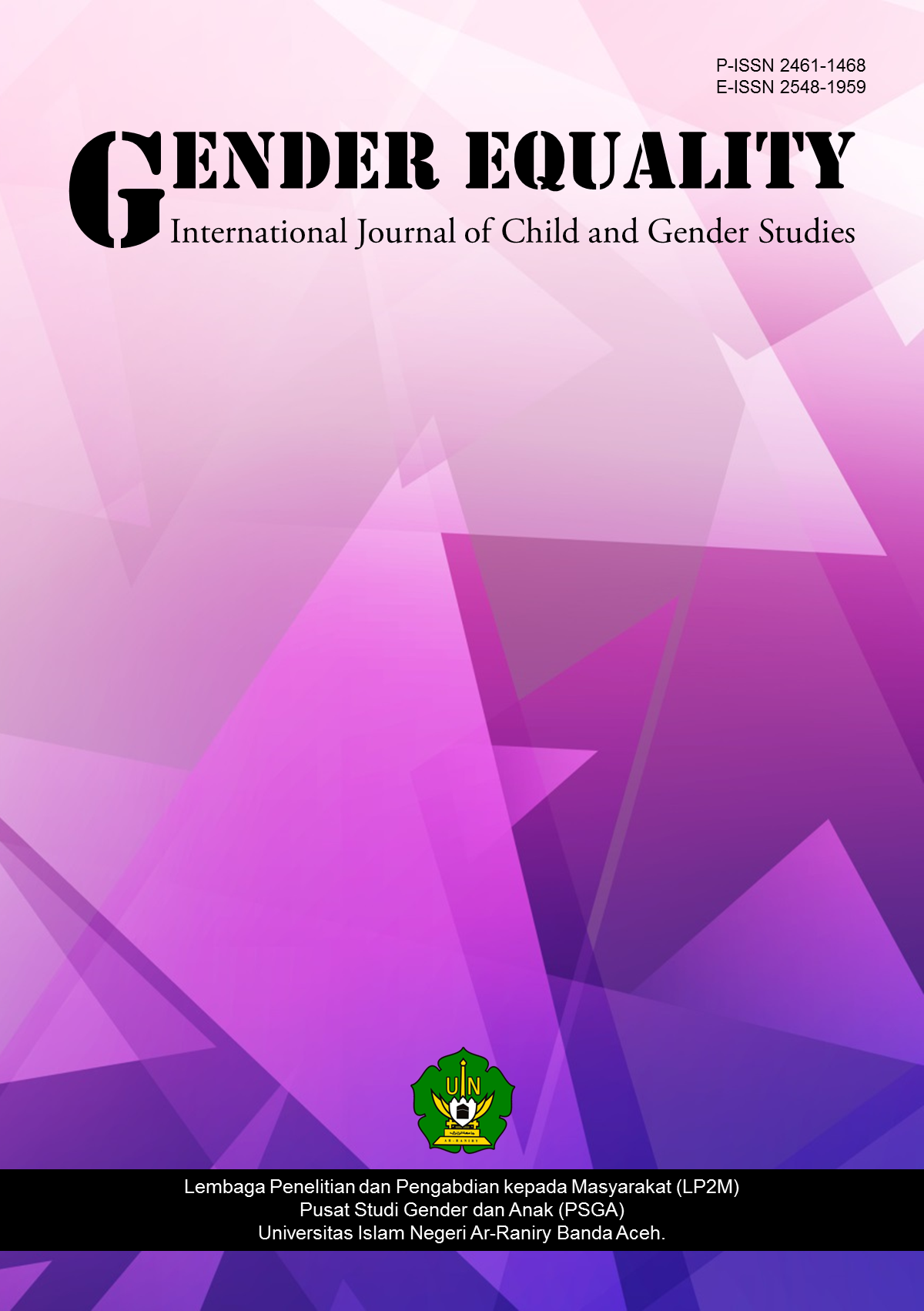Face strategies in headlines from the Nigerian tribune's court and crime column
DOI:
https://doi.org/10.22373/equality.v10i1.21756Keywords:
Face-saving, Face-threatening acts, Marital communicationAbstract
This study conducts an in-depth analysis of face-saving and face-threatening acts as depicted in selected headlines sourced from the Court and Crime Column in the Nigerian Tribune, with a specific focus on the context of marital relationships. Employing a qualitative content analysis, the research looks into the intricate elements of language and communication strategies employed by individuals within these headlines. The findings elucidated both face-saving and face-threatening acts, illuminating the many dynamics inherent in marital communication. Through careful examination, key themes emerged, encompassing a spectrum of behaviour including accusations, justifications, denials, and endeavours aimed at preserving one's reputation. By shedding light on these underlying patterns, the study underscores the crucial role of language and communication in marital relationships, offering valuable insights into the strategies individuals employ to safeguard their own dignity or challenge the integrity of their partners. Moreover, the research contributes significantly to our understanding of the complexities surrounding communication dynamics within marriages, emphasizing the profound impact of face-saving and face-threatening acts on perceptions and relationship outcomes. Ultimately, the study advocates for the adoption of effective communication strategies, emphasizing the importance of positive language choices, empathy, and understanding as fundamental pillars for fostering and sustaining healthy and harmonious marital relationships.
References
Baxter, L. A., & Montgomery, B. M. (1996). Relating: Dialogues and dialectics. Guilford Press.
Boyle, Ronald. (2000). ‘‘You’ve worked with Elizabeth Taylor!”: Phatic functions and implicit compliments. Applied Linguistics, 21(1), 26--46.
Brown, P., & Levinson, S. C. (1987). Politeness: Some universals in language usage (Vol. 4). Cambridge university press.
Caughlin, J. P., & Vangelisti, A. L. (2000). An individual difference explanation of why married couples engage in the demand/withdraw pattern of conflict. Journal of Social and Personal Relationships, 17(4-5), 523–551. https://doi.org/10.1177/0265407500174004
ChinturuAdindu, M., & Ogbonnaya, U. Implicature and the language of advertising. International Journal of Advances in Engineering and Management (IJAEM), 2(10), 01-06
Chomba, Z. N., Kiarie, J., & Njani, E. (2023). Influence of language on marital satisfaction among couples in intercultural marriages, Kiambu County, Kenya. International Journal of Education, Psychology and Counselling (IJEPC), 8(50), 87-108.
Denzin, N. K., & Lincoln, Y. S. (2003). Introduction: The discipline and practice of qualitative research. In N. K. Denzin & Y. S. Lincoln (Eds.), The Landscape of Qualitative Research: Theories and Issues (2nd ed.). Thousand Oaks, CA: Sage Publications.
Gottman, J. M., & Notarius, C. I. (2000). Decade review: Observing marital interaction. Journal of Marriage and the Family, 62(4), 927–947. https://doi.org/10.1111/j.1741-3737.2000.00927
Holmes, J., & Schnurr, S. (2017). (Im) politeness in the Workplace. The Palgrave handbook of linguistic (im) Politeness, 635-660.
Horn, A. B., Meier, T., Dehghani, M., & Boyd, R. L. (2022). Language in close relationships. Switzerland: University of Zurich.
Hou, M. (2023). Face and identity in intercultural conflict management. Journal of Intercultural Communication, 23(2), 88–96. https://doi.org/10.36923/jicc.v23i2.55
Huang, Y. (2008). Politeness principle in cross-culture communication. English Language Teaching, 1(1), 96-101.
Ifeanyi E., Arua. (2020). Non-verbal cues and politeness strategies in Post Office service encounter in Nigeria ARUA Ifeanyi E. IOSR Journal Of Humanities And Social Science (IOSR-JHSS), 25(2), 40-48
Kádár, D. Z., & Haugh, M. (2013). Understanding politeness. Cambridge University Press.
Koerner, A. F., & Fitzpatrick, M. A. (2002). Toward a theory of family communication. Communication theory, 12(1), 70-91.
Mehellou, Ramdani & Adetunji. (2019). The role of face concerns and facework in managing communication conflict among Arabs and Malaysians. International Journal of Innovation, Creativity and Change, 10(8), 1-14.
Omeje, J. C., Ugwu, B. L., & Ogidi, C. I. (2022). Influence of marital communication on family stability of married teachers in Nsukka education zone. Educational Research and Reviews, 17(3), 103-108.
Yule, George. (1996). Pragmatics. United Kingdom: Oxford University Press.
Downloads
Published
Issue
Section
License
GENDER EQUALITY: International Journal of Child and Gender Studies allows the author(s) to hold the copyright and to retain the publishing rights without restrictions. Authors who publish with this journal agree to the following terms:
- Authors retain copyright and grant the journal right of first publication with the work simultaneously licensed under a Creative Commons Attribution License that allows others to share the work with an acknowledgment of the work's authorship and initial publication in this journal.
- Authors are able to enter into separate, additional contractual arrangements for the non-exclusive distribution of the journal's published version of the work (e.g., post it to an institutional repository or publish it in a book), with an acknowledgment of its initial publication in this journal.
- Authors are permitted and encouraged to post their work online (e.g., in institutional repositories or on their website) prior to and during the submission process, as it can lead to productive exchanges, as well as earlier and greater citation of published work.



